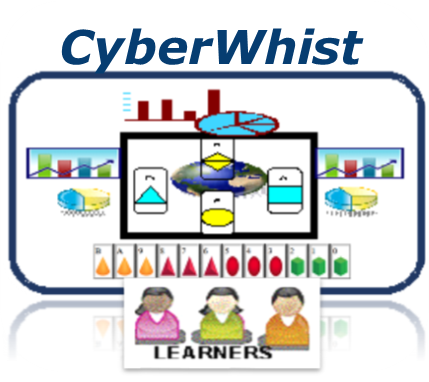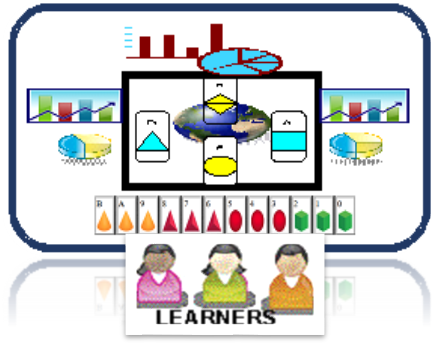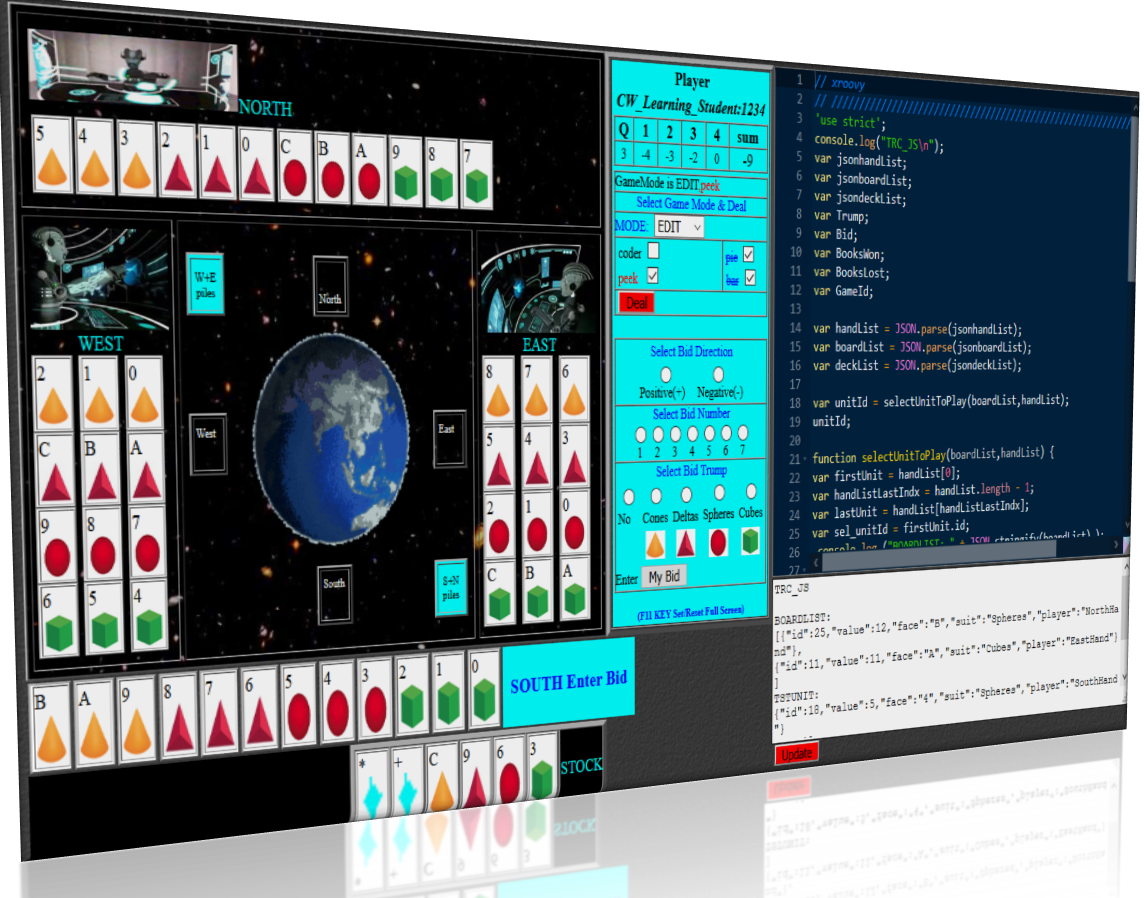CyberWhist is a web-based adaptation of the gameplay rules and mechanics of a set of Classic Whist derived card games, such as Bridge, Euchre, BidWhist and Spades.
- CyberWhist leverages the Whist games’ universal cultural appeal, and cognitive elements, to serve as a Game-based Learning Tool for Learners to practice the three stages of Computational Thinking: (1) problem formulation, (2) solution expression, and (3) solution execution/evaluation.
- Our platform leverages the universal cultural appeal and cognitive elements of Whist games to offer an engaging Game-based Learning Tool that helps students practice Computational Thinking and Coding.
- Our mission is to broaden participation in K12 Computational Thinking / Computer Science by providing a culturally situated supplement to existing Learning Tools.
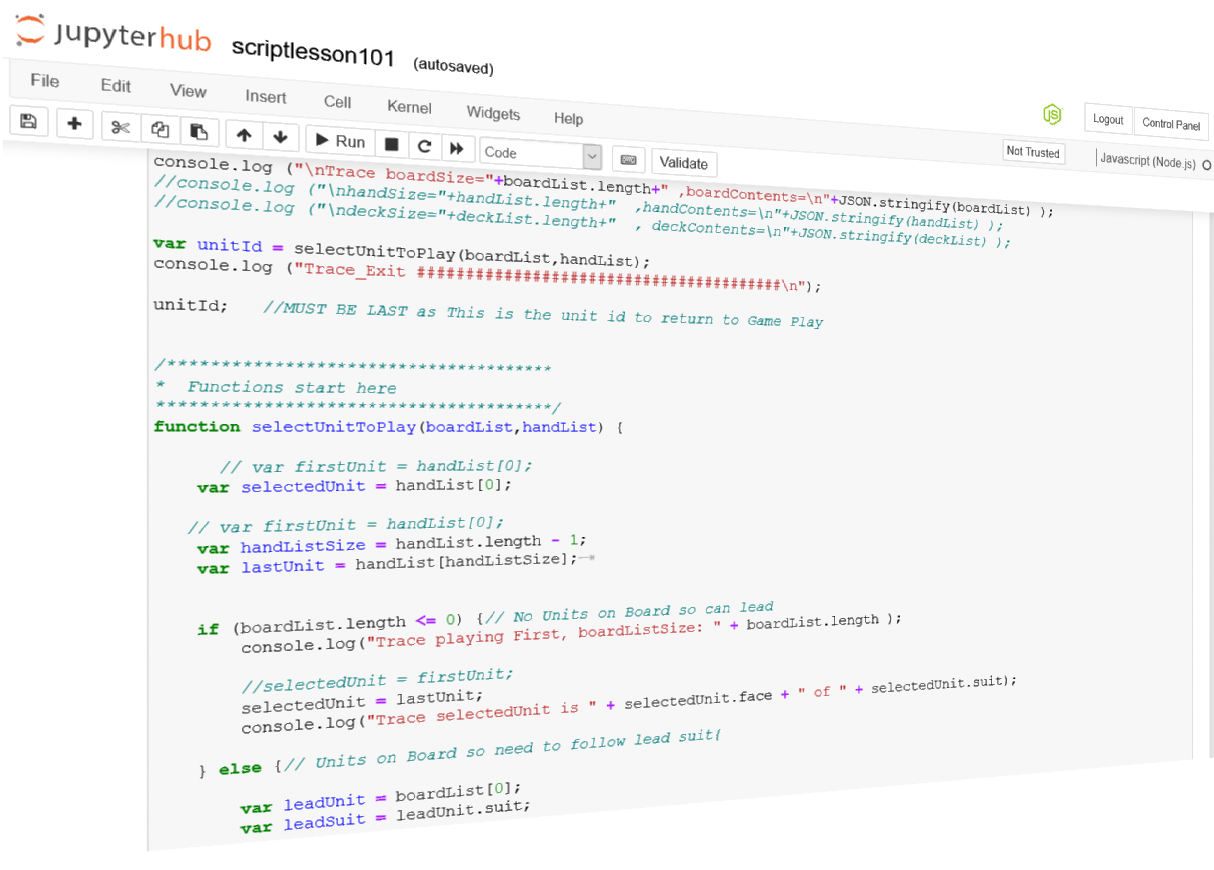
Uses Jupyterhub Lab-Notebooks
Integrated JupyterHub Lab-Notebooks as a web-based interactive computational development environment.
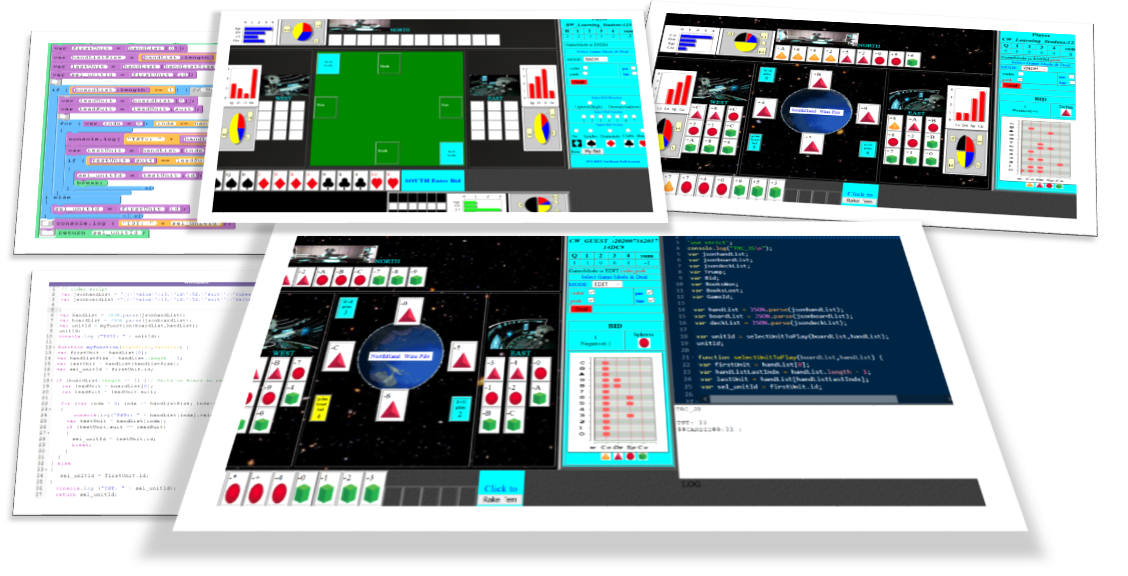
CyberWhist
Game Based Learning Tool presenting
a "MetaWhist Spaceview" version
and a classic version.
CyberWhist features include:
- A Game Based Learning Tool presenting a “MetaWhist Spaceview” as modified/refaced cards, in addition to a classic version of BidWhist using standard playing cards. The games incorporate pie, bar, plot graphs, to display additional gameplay information.
- An Integrated JupyterHub Lab-Notebooks as a web-based interactive computational development environment.
- Coding in languages such as JavaScript, also Java (Groovy), also Solidity (Ethereum Smart Contracts) and more to be added.
- Learning Management System (LMS) integration and access using Learning Tools Interoperability (LTI) support.
The expected benefit of playing the game is that Learners will use Computational Thinking practices to:
- Deliberately examine and codify their gameplay steps/decisions (such as conditionals, rules of thumb, algorithms).
- Develop the code to replicate the manual play (using decomposition, abstractions).
- Perform solution execution/evaluation by comparing the manual game with the automated results.
